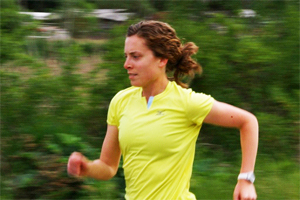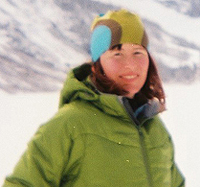A Few Thoughts for Age Group Runners
Ed McNeely – Peak Centre for Human Performance
Master’s sport is growing rapidly in North America. I was speaking to a group of running coaches the other day and one of them made a statement that kind of puts everything in perspective “everybody becomes a masters runner, nobody can go back to being a junior”. With this in mind I would like to discuss a few things that every masters (or future masters) runner should consider.
Effects of Aging
Much research has been done on the effects of aging on performance. It has been accepted that there is a decrease in strength, aerobic power, anaerobic power, flexibility, balance, cardiovascular function, and reaction time. Before you become too depressed about this keep in mind that most of the research has been done on sedentary people who remain sedentary.
Exercise will slow the decline in physical functioning associated with aging (all the more reason to run). Those of you who take up running for the first time as a master’s aged runner may find that they are in better shape now than they were when they were younger. Many who come back to rowing after several years off find that they perform as well or better than when they were younger. A variety of reasons contribute to this a better training regime, more patience, better equipment, and the finances to hire coaching go a long way to improving performance.
I don’t want this to sound like runners are immune to the effects of aging they just have to kept in perspective. A recent study that examined 10k races found that, for the average runner, age accounts for about 33% of the differences in scores across the age categories for men and 21% for women. Technique, motivation, and physical conditioning were far more important for most runners. For the best runners age was a bigger factor and accounted for 90% of the difference in scores. This means that the top 40-year-old runner will most likely beat the top 50-year-old runner.
The rate of decline in performance due to aging is about 7-13% per decade. With the rate of performance decline accelerating after age 50. If year over year your performance times are staying the same it actually means you are improving by 0.7-1.3% per year. If you are seeing improvements you are further ahead than you thought.
Year Round Training
Many master’s run during the summer and fall, take 4-5 months off, then start up again. I have heard many of these people complain that they don’t seem to make any progress from year to year. Training adaptations will be maintained for at most 6-8 weeks unless a maintenance program is used. To maintain aerobic fitness 2-3 training sessions of 40-60 minutes should be done each week. This training doesn’t have to be running, cross training is an effective means of maintaining your aerobic base.
Training Hours
The number of hours you are willing or able to commit to rowing will affect your performance. To a point, more training means better performance. Elite International rowers will train 800-1000 hours per year. This is unnecessary and probably impossible for most master runners because of decreased recovery ability.
Commitments to work and family limit the number of hours that most master’s rowers have for training. If you have hit a plateau in performance you need to consider increasing your training time. A 10% increase in the number of yearly training hours can pay huge dividends in performance. However, unless you have regular coaching on running technique more that 9-10 hours of training per week is unnecessary for the master’s athlete.
Unless you were an elite runner, performance improvements are possible throughout a master’s career. With more resources and a little patience you will probably be performing better than when you were younger. Most of the normal effects of aging can be delayed with a well designed training.
___________________________________________________________
PEAK Centre staff have the highest certifications available in Canada for Sport Science. With their combined experience and education, PEAK Centre is at the forefront of practical Sport Science application.




 The time to return to school is just around the corner and you’ve spent all summer training and chasing personal bests on the roads and trails. Did you also realize that establishing these habits is also going to make you smarter? More specifically, aerobic exercise (such as running) has been shown to have positive effects on our ability to reason and process thoughts. Dr. Paul van Donkelaar is a professor of neuroscience at the University of British Columbia Okanagan Campus in the school of Health and Exercise Sciences, met with me to discuss how exercise leads to improved cognitive functioning. Once an elite rower, Dr. van Donkelaar is now an avid runner who likes to train and race for health, to be social and enjoy the occasional beer 😉
The time to return to school is just around the corner and you’ve spent all summer training and chasing personal bests on the roads and trails. Did you also realize that establishing these habits is also going to make you smarter? More specifically, aerobic exercise (such as running) has been shown to have positive effects on our ability to reason and process thoughts. Dr. Paul van Donkelaar is a professor of neuroscience at the University of British Columbia Okanagan Campus in the school of Health and Exercise Sciences, met with me to discuss how exercise leads to improved cognitive functioning. Once an elite rower, Dr. van Donkelaar is now an avid runner who likes to train and race for health, to be social and enjoy the occasional beer 😉 Nikki Reiter holds a master’s degree in biomechanics and is a Mizuno Running Brand Ambassador and the Women’s Cross Country Running Head Coach at the University of British Columbia Okanagan campus in Kelowna, BC. She is also the Laboratory Coordinator in the School of Health and Exercise Sciences at UBC Okanagan where she facilitates undergraduate laboratory learning.
Nikki Reiter holds a master’s degree in biomechanics and is a Mizuno Running Brand Ambassador and the Women’s Cross Country Running Head Coach at the University of British Columbia Okanagan campus in Kelowna, BC. She is also the Laboratory Coordinator in the School of Health and Exercise Sciences at UBC Okanagan where she facilitates undergraduate laboratory learning.


 By: Magi Scallion
By: Magi Scallion Born in Nova Scotia and emigrating to British Columbia via Ontario and Alberta, Magi has been running the entire way. Primarily defined as a cross country ski racer, Magi has competed nationally and internationally in that sport. The highlight of her career was competing in the World University Games and the World Cup races in Canada in 2007. Cross country skiers rely heavily on running for cross training and Magi has become an accomplished trail and mountain runner, representing Canada at the World Mountain Running Championships in 2005 and the winning numerous national championships medals.
Born in Nova Scotia and emigrating to British Columbia via Ontario and Alberta, Magi has been running the entire way. Primarily defined as a cross country ski racer, Magi has competed nationally and internationally in that sport. The highlight of her career was competing in the World University Games and the World Cup races in Canada in 2007. Cross country skiers rely heavily on running for cross training and Magi has become an accomplished trail and mountain runner, representing Canada at the World Mountain Running Championships in 2005 and the winning numerous national championships medals. 


 Our Magazine
Our Magazine
